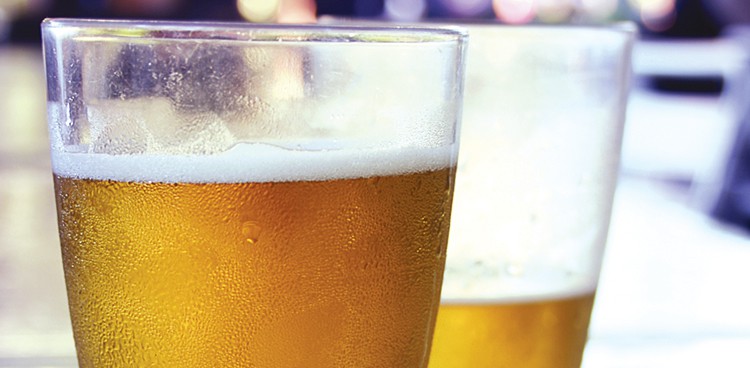
Editor’s note: This post was updated on June 2, 2021.
I like salt scattered on French fries, mixed into bloody marys, and rimming margaritas. Beer? Not so much, with one exception: Germany’s gose (pronounced goes-uh), an ancient wheat quaff with a refreshing tartness (and yes, briny kick). Consider it a killer electrolyte replenisher on a sweaty summer afternoon.
When used in cooking, salt sharpens and stitches together disparate flavors—it’s an essential ingredient. Germany’s centuries-old gose, however, did not come from a recipe but rather happenstance. The beer’s origins can be traced to the 16th century in Goslar, a mining town in northwest Germany, where the mineral-rich waters of the local Gose River supplied the tipple with its name and signature sodium chloride. (Ambient bacteria created the tart edge during spontaneous fermentation.)
By the 1700s gose’s popularity had spread east to Leipzig, where residents dug the acidic, salty quaff and began brewing their own versions. The style soldiered on until the 1940s, when the government shuttered the last brewery during World War II. Four decades later gose slowly stirred from the grave, thanks to Leipzig bar owners and breweries—especially Gasthaus & Gosebrauerei Bayerischer Bahnhof, situated in the city’s landmark train station. The revival’s slow German simmer became a full American boil as stateside brewers cottoned to the low-ABV style’s approachable tartness and dry finish—perfect for drinkers tiptoeing into sour waters. (These days the pucker typically comes from the bacterium Lactobacillus, while salt is manually added.)
Over the past five years, gose has gone from antiquity to ubiquity, a fast rival to lemonade as a summertime sipper. South Carolina’s Westbrook was one of the first US breweries to embrace gose, debuting bottles of its coriander-laced riff in 2012 (it’s now canned). While classically inspired examples abound, such as Off Color Brewing Troublesome and sea salt–tinged Lost Nation Brewing Gose, US brewers have treated gose as a trampoline for tasty experimentation. Victory Brewing Company’s Kirsch Gose brims with cherries, Odell Brewing Company’s Brombeere boasts blackberries, and Evil Twin Brewing and Two Roads Brewing Company’s Two Evil Geyser Gose is agog with Icelandic moss and sea kelp.
How to Pair
Tread carefully: NaCl-dosed gose will unpleasantly amplify an already briny cheese such as feta or halloumi. Instead, reach for a fresh goat cheese such as Chèvre d’Argental or Rawson Brook Farm Monterey Chèvre, which achieve tangy harmony with the beer. For a different direction, seek out creamy burrata from Vermont’s Maplebrook Farm or Dallas-based Mozzarella Company. The beer’s biting quality slashes through richness, while the salinity rounds out the cheese’s buttery depth.
Five to Try
Almanac Beer Co. Golden Gate Gose
The Bay Area brewery uses San Francisco Bay sea salt and locally grown lemon verbena and coriander in this complex formulation that screams for a sunny picnic.
Anderson Valley Brewing Company Blood Orange Gose
Plenty of crimson citrus added during fermentation turns Anderson Valley’s bubbly, zesty gose into a mimosa-like morning reviver.
Sierra Nevada Brewing Co. Otra Vez
Prickly pear cactus and grapefruit provide Otra Vez with a breezy, fruity flair. Talk about a thirst quencher.
Freigeist Geisterzug Gose
The German-beer revivalists at Freigeist season Geisterzug (“ghost train”) with spruce, unlocking a forest of flavor.
Dogfish Head Craft Brewery SeaQuench Ale
Dogfish Head blends a classic Kölsch, lime-laced Berliner weisse, and gose goosed with black limes, coriander, and sea salt to create a pitch-perfect summer sipper.




